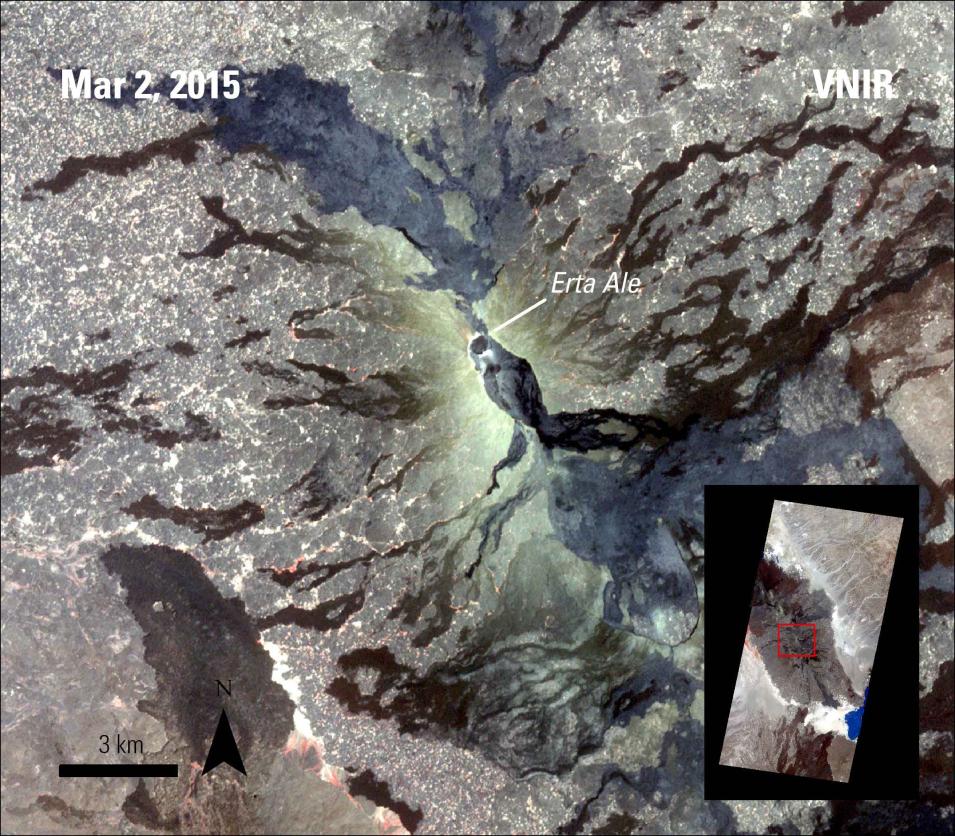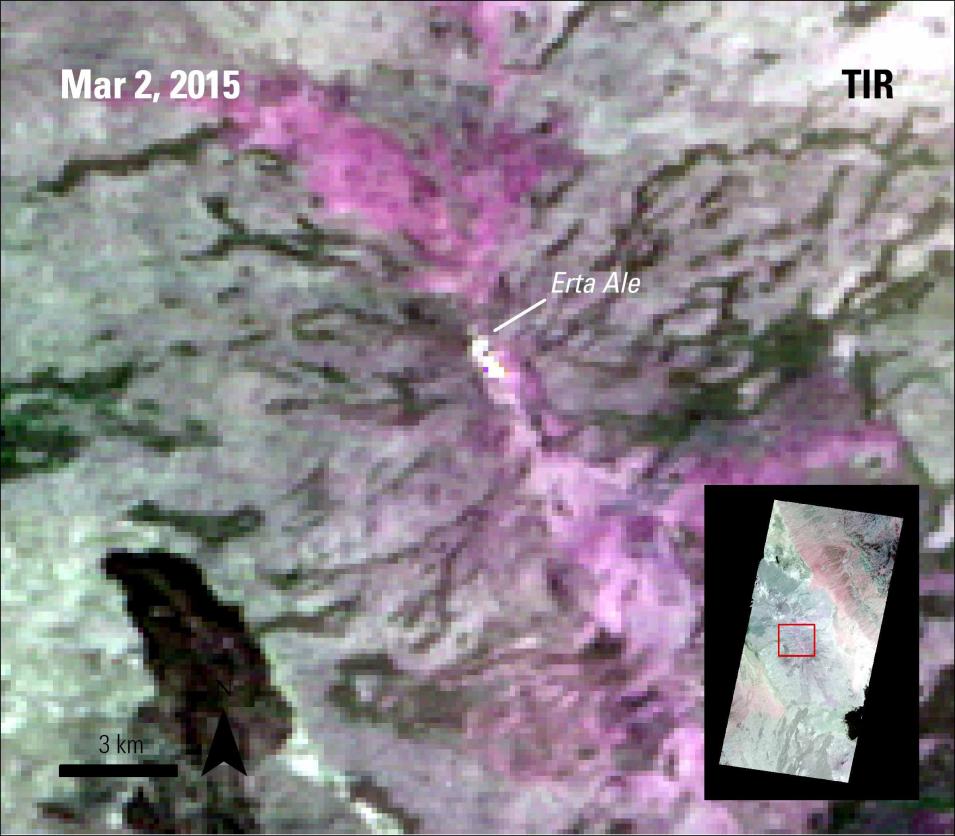References
Publication Reference
Abrams, M., Tsu, H., Hulley, G., Iwao, K., Pieri, D., Cudahy, T., and Kargel, J., 2015, The Advanced Spaceborne Thermal Emission and Reflection Radiometer (ASTER) after fifteen years: Review of global products: International Journal of Applied Earth Observation and Geoinformation, v. 38, p. 292-301, at doi:10.1016/j.jag.2015.01.013.
Article References
JSS, 2012. Volcano Monitoring Using ASTER: Japan Space Systems (JSS) ASTER Science Project Web page, accessed March 6, 2015.
Murphy, S.W., Wright, R., Oppenheimer, C., and Souza Filho, C.R., 2013, MODIS and ASTER synergy for characterizing thermal volcanic activity: Remote Sensing of Environment, v. 131, p. 195-205, at doi:10.1016/j.rse.2012.12.005.
NASA JPL, [n.d.], Erta Ale: National Aeronautics and Space Administration (NASA) Jet Propulsion Laboratory (JPL) ASTER Volcano Archive Web page, accessed March 2, 2015.
NASA Visible Earth, 2000, Thermal Infrared, Afar Triangle, Ethiopia, accessed March 1, 2015.
SI, 2013, Erta Ale: Smithsonian Institution, National Museum of Natural History Global Volcanism Program Web page, accessed March 2, 2015.
Image References
ASTER VNIR Granule IDs
- AST14OTH_00303022015075628_20150305193034_27227
- AST14OTH_00303022015075637_20150305193034_27225
ASTER TIR Granule IDs
- AST14OTH_00303022015075628_20150305193034_27227
- AST14OTH_00303022015075637_20150305193034_27225


